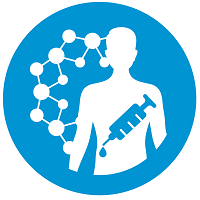Preclinical, Clinical, and Translational Sciences
Rapid Fires: Novel In Silico and In Vitro Approaches in Drug Development 1
Virtual Cells in Drug Discovery: A Physics-to-Intelligence Journey
Monday, November 10, 2025
3:00 PM - 3:15 PM CT
Location: 225 AB

Christopher Korban
Chief Executive Officer
Revilico Inc
Rapid Fire Speaker(s)
This talk traces the evolution of AI in drug discovery—from early physics-based docking and molecular dynamics to today’s data-driven virtual cell models. This talk is meant to appeal to those of all backgrounds, and to bring together both computational design and experimental implementation in a unified fashion. We explore how Revilico is pioneering a next-generation “virtual cell” platform, merging computational assays with RNA-seq perturbation data to emulate biological complexity at scale. Our closed-loop discovery engine integrates physics-informed and AI-native tools to enhance prediction of molecular interactions, properties, and phenotypic effects. This presentation will highlight challenges in building robust virtual assays, including the need for high-quality data, computational infrastructure, and benchmarks that ensure successful experimental translation. Revilico's approach signals a new frontier in early-stage drug discovery. In this session, the goal is to trace the evolution of tools, see where the field is going in terms of new data modalities and large collection strategies, and what that means for the future of small molecule discovery. There will be components of model training and building at a high level to be understandable by those with experimental or computational background, and to get a better sense of how the industry should utilize these models to reinforce hypotheses, test and critique currently existing beliefs, and generate new ideas for those translating design into the wet lab.
Learning Objectives:
- Trace the evolution of computational tools from early physics-based methods to quantum chemistry, ligand–protein modeling, and now ligand–cell perturbation studies.
- Understand how virtualized cell lines using compound-cell perturbation data can enhance discovery pipelines.
- Understand the landscape of data collection being undertaken currently, what are the different modalities being collected, and how does that translate to specific stages of the discovery process.
- Understand and be able to analyze how models are built, what are their core components, and what are the translational layers between human scientists and computer models.
- Upon Completion, the hope is that participants have a high level scope of computational tools across different chemistry and biology domains and how AI is primed to bring the largest benefits to the biomedical sector.


